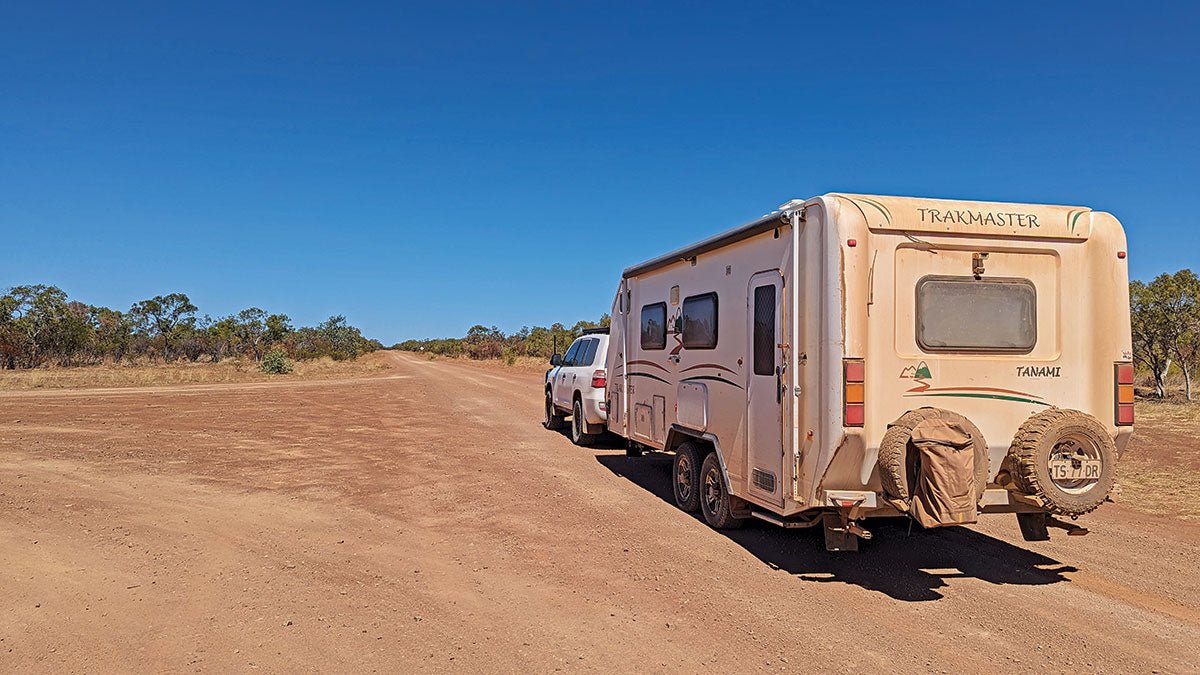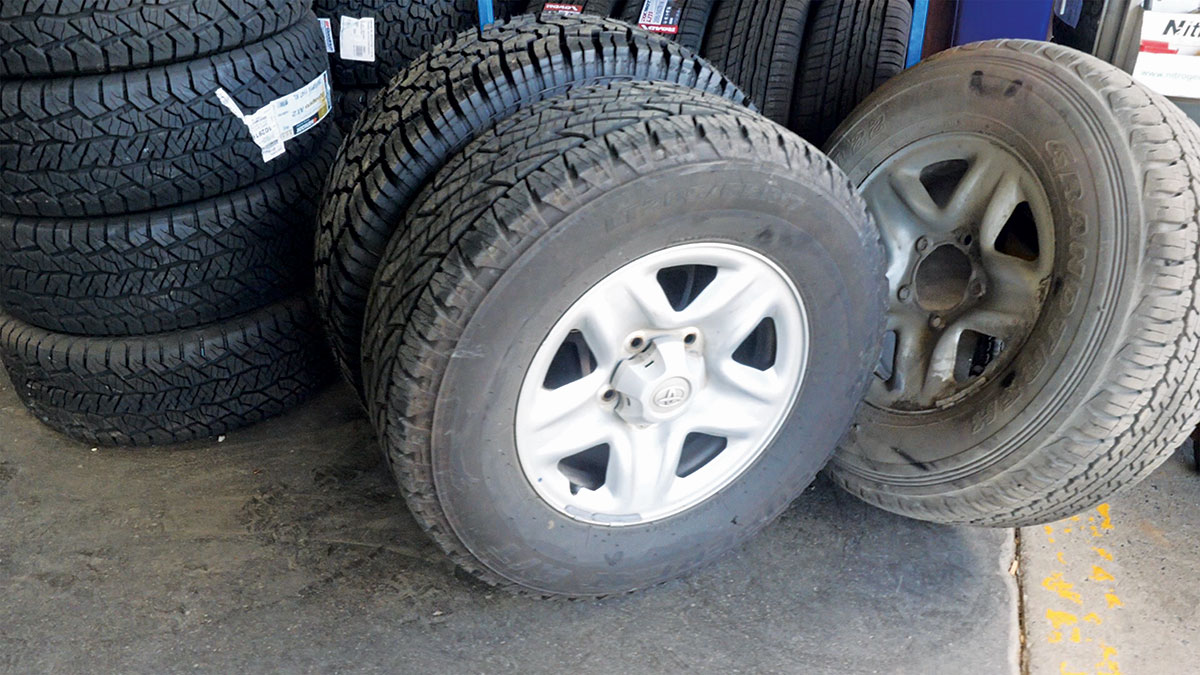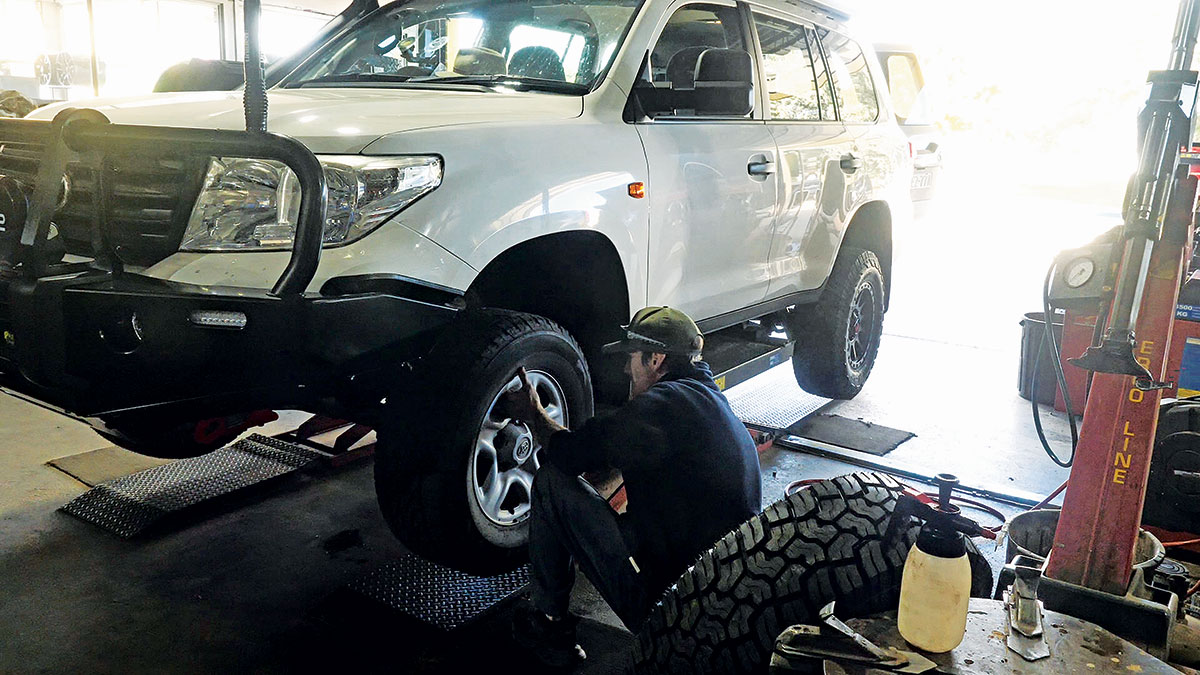Operation 200 Part 5: Brakes and wheels

As rugged and reliable as they are, there's a good argument that Toyota's station wagon LandCruiser series was never designed for serious towing or cargo carrying. The 70 Series is a different matter, but the payload capacity of the wagons is limited to cater for up to eight passengers. As highlighted in our features on upgrading our own version, most modified 200s will tip over their allowed gross vehicle mass (GVM). For this reason, we fitted our car with a Tough Dog suspension and a GVM upgrade that significantly increased our carrying capacity.
And while that puts us on the right side of the law when loaded, I am concerned about the standard Toyota brakes coping with the extra weight we carry, especially hooked up to our 3200kg Trakmaster.
We upgraded our previous 100 Series LandCruiser with the Bendix Ultimate 4WD Big Brake and they made a big difference to the stopping power. So, when Bendix suggested a similar upgrade for Operation 200, we agreed without hesitation. The Ultimate 4WD Big Brake Upgrade Kit includes pads, slotted discs and braided lines, all designed to maximise stopping performance and minimise brake fade on long hill descents.
The pads use a high-performance ceramic material for high-temperature stability and are designed for quieter operation and to work best with slotted rotors.
Bendix manufactures its slotted front and rear disc brake rotors according to Australian design rule standards from premium steel. Diamond tip slots allow gases formed from the high-temperature reaction between disc and pad to escape quicker and offer better self-cleaning in offroad conditions. The rotors have a protective zinc coating that eliminates the need for bedding in the system after fitting.
The kits arrived in a handy reusable ice box for the front and a storage box for the rear with all the ancillary products needed for installation, including brake fluid, clean-up spray and lubricant. We booked the car into Ardy’s Automotive in Pambula, not far from home, and they soon had the 200 on a hoist with all the wheels removed for action.

Access to all the discs is much simpler than on the 100 Series because the front discs aren't combined with the bearings. With the wheels removed, the front brake callipers remove quickly after undoing two 17mm bolts. The old pads come out by unclipping the retaining wire and removing the two pins. Rotors are held in place by the wheel nuts and should come off without too much effort, but if friction is holding them, screw a couple of 8mm bolts into supplied treads and push the rotors off the backing plate.

The rear process is similar; however, as the rear rotors also incorporate the hand brake drums, they should be backed off to avoid pinching as they slide over the brake shoes.
The new braided brake lines reduce any expansion of the pipes under the pressure and heat of extreme conditions and because of the raised suspension as part of our Tough Dog GVM upgrade the kit came with longer lines to suit.

The Toyota has computer-controlled brake bleeding capability for single-handed system bleed, which is how we proceeded. You can still use the manual method with a second person pumping the brakes, and I later found an automated process on our Autophix scanner that would get you out of trouble as a DIY install.
Bendix claims a 15–20 per cent improvement over standard brakes. The 200 has more stopping power than the old 100, and the newer model is even better with the upgraded equipment in place.
In practice, with the extra weight of the van on the back, I am happy and more confident with the stopping power. The longest descent for our whole trip has been the run down the escarpment from Atherton, Qld, to the coast, where we never felt any need to worry that we wouldn't stop safely. That was after nearly 20,000km, and the brakes felt like new.
The Ultimate 4WD Upgrade Kits are available from most automotive retailers. The complete sets are RRP $1439 for the front and RRP $659 for the rear.
STYLING IN SAFETY

No one has suggested the stock steel wheels on our LandCruiser look great. Our GX is the utilitarian version of the 200 Series range and misses out on some of the cooler looks and luxuries of the GXL and Sahara. But the steel wheels are a practical solution to a vehicle more tuned to rough treatment. They are also cheaper to produce, which fits the GX's poverty pack theme.

Bob Jane T-Marts is one of our major partners at Emprise Group, owner of Caravan World, and when it heard about our plans to upgrade our 200 Series LandCruiser, it was keen to get on board to showcase some fantastic-looking and very practical wheels and tyres.
As well as the stodgy steel wheels, our car has a pretty ordinary set of tyres, so we were keen to fit something more in keeping with our remote travel plans. Our 200 isn't destined for extreme macho rock-hopping adventures, but we do plan remote travel on outback roads with a mix of corrugations, mud and gibber tracks. We settled on a set of Yokohama Geolandar X-AT G016 tyres to meet our needs.

The G016 is a hybrid all-terrain tyre designed for optimum traction across a range of conditions combined with the robust construction of a Mud Terrain. They are more offroad oriented than many All-Terrain tyres and have a great-looking aggressive pattern than Yokohama's A/T G015, designed for predominantly on-road use.
The G016 features a hybrid tread pattern that makes it better on road with an aggressive edge tread to better disperse water when driving in rain. Meanwhile, big square central blocks grip well in mud, and side bites improve traction when you lower the pressure for sand and corrugations.
The Bob Jane organisation retails a vast range of tyre brands, so it is even-handed when recommending tyre choices. However, it supported the G016s as our preferred option as a brand it was confident would last the trip and work well in all conditions.
When it comes to tyre size, we were guided somewhat by the Tough Dog engineers who installed our GVM upgrade. They certified the system for a tyre diameter up to seven per cent over the standard 285x65 x17 set, which allowed us to go to 285x70 x17 tyres and increase to 36mm (1.5in) in height. It might not seem like much, but it added 18mm of travel height to the diff centres and gave a wider rolling diameter for a bigger footprint and better traction on sand.
MONSTER MASH

Because the stock wheels looked so daggy, we were also keen to switch to a better-looking set of alloys, and our search led us to the Monster Ammo range. They impressed with their upmarket flow forged construction which delivers a lighter and stronger speciation against most after-market competitors. With a 1500kg load rating at each wheel, we were well within our 3800kg GVM on the Toyota.
A flow-forged wheel is first cast, with the barrel section narrower than its final size. The wheel is then heated to over 400 degrees and spun at high speed on a lathe while a spinning disc applies pressure to the barrel, forcing it to expand. The heat and pressure change the molecular makeup of the aluminium to make it stronger, lighter and more resistant to shock than a cast version.

The Ammo for the 200 Series is 8.5in x17in with a 35-degree offset. The offset is important to make sure the wider replacement wheels maintain the vehicle track within legal specifications. So, because the new tyre/wheel combination is wider, we went with the advice from Bob Jane T-Marts to ensure the 200 Series would remain within legal specification on wheel fitment. The Ammo range is sleek looking with 12 spokes and red-toned centres. We chose the satin black finish, and there's a bronze and dark grey version for most popular 4WD vehicles.
Because our journey to Western Australia was taking us through central NSW, we arranged to have the wheels and tyres fitted at the Dubbo Bob Jane T-Marts. When we arrived, the tyres were already on the wheels and balanced, so we drove into the fitting bay for a quick swap. The crew took the car for a quick spin and returned for a second check of the torque settings. With some help, I loaded the second spare on the Ironman roof rack and went off for a quick test.

My first impression is that the steering felt lighter and more direct, perhaps due to correct balance and less wear compared to the old used and fairly non-descript all-terrain tyres we had before the change.
At the time of writing this report, we have covered close to 20,000km across a wide variety of roads, most of it towing our 3200kg Trakmaster van. About half has been dirt, including the Oodnadatta Track, The Gary Junction Highway to Marble Bar, 30km of the northern end of Eighty Mile Beach, side roads at Cape Leveque and the Savannah Way across the Gulf. On most of the long dirt sections we have reduced the pressures to 20psi on both car and van. We have some relatively cheap solar-powered tyre monitors to keep an eye on what's happening, and they saved trouble when they registered that we had picked up a small nail on the van.
Offroad performance has been impressive. We survived muddy tracks, water crossings and the worst corrugations without an issue. An adventure looking for Running Waters Pool near Carawine Gorge had us crawling (without the van) across sharp rocky tracks where I was glad of the extra body height.

I'm also happy with how the Yokohamas work on the bitumen. Many tyres will get you over the rough stuff but can be damned dangerous on a wet tar road. We saw enough rainy weather to give the G016s a high rating on the blacktop. They handle well at speed and are quiet on anything but shiny tar sections of repaired roads and, even then, not too offensive.
There's a downside to the bigger tyres, though. Fuel use increased by around 2L/100km when we changed to the 285x65s. Anything you do to a stock 200 will affect the fuel use, and we have done a lot — with the bull bar and roof rack all adding to the wind resistance and weight. The benefits are grip, safety and added ground clearance. There’s also the reassurance that the tyres will be durable on remote outback roads. Knowing we have the best rubber and wheels under us when miles from help has been very reassuring.
With nearly 20,000km behind us, tread wear has been minimal. I'd be surprised if we didn't get at least 80,000km from them. Importantly, Yokohama has a valuable repair or replacement warranty on punctures or damage in the first two years and with 75 per cent tread depth. With more than 50 per cent tread left, there's a pro-rata warranty. The Yokohama G016 has a retail price of $495, and the Monster Ammo wheels are $459.
THE NEXT STEP
Are you ready to experience the freedom of the open road? Don't wait - Find your dream getaway now!
If you haven't already check out the previous articles in John Ford's 200 Series:
Operation 200 Part 1: Legal and loud
Operation 200 Part 2: Safer towing and better storage







